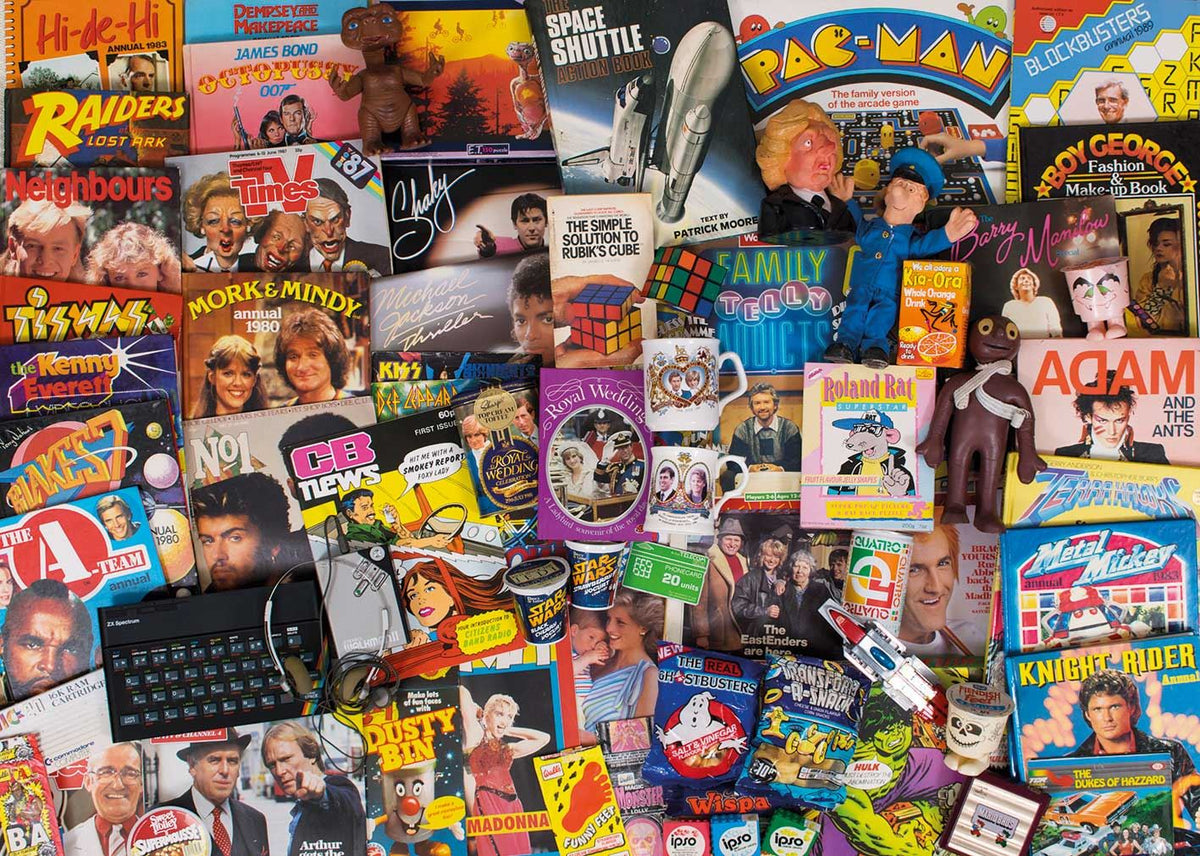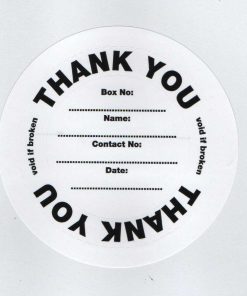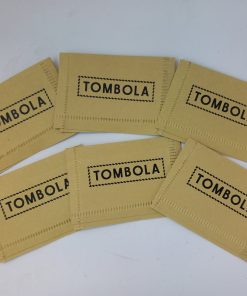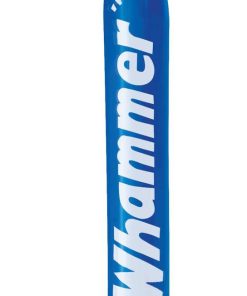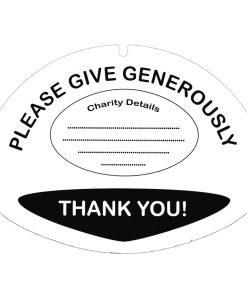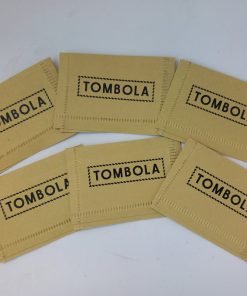Gibsons Spirit Of the 80’s Jigsaw Puzzle (1000 pieces) Gibsons Games
$ 9,52 $ 5,71
Spirit of the 80s by artist Robert Opie is a high quality 1000 piece jigsaw puzzle by Gibsons.
This 1980s overflowed with technological advances – a revolution served up with silicon micro-chips, fibre optics, compact discs, camcorders, barcodes and the Sony Walkman to accompany the lonely jogger. The home computer was becoming part of the family scene along with electronic games; the mobile phone was a favourite of the ‘yuppie’ generation. For some, the exciting way to keep in touch was with citizens band radio (CB) which was legalised in 1981.
Global communication created vast audiences for world events, such as the royal weddings of Charles and Diana in 1981 and then Andrew and Fergie in 1986. Television’s influence increased with Channel 4’s transmission starting in 1982. The following year, breakfast television began and it was the antics of Roland Rat that saved TV-am. The new ‘soap’ was EastEnders.
The political landscape was dominated by Mrs Thatcher, but the satire of Spitting Image was to trouble all politicians. The Falklands War was fought and won in 1982, and in 1989 the Iron Curtain was lifted as the Berlin Wall came down.
The 1980s was full of memory moments – dumpy milk bottles with adverts on them, the frivolous fashion of the New Romantics such as Adam and the Ants, the frustration of Rubik’s Cube, the taste of a 54321 chocolate bar, Fiendish Feet yogurt or Quatro drink. The serious issue of famine in Africa was highlighted by Live Aid in 1985.
This fascinating puzzle by Robert Opie allows you to relive the 1980s.
Gibsons are renowned for their jigsaw puzzles with carefully illustrated pieces which are made from the highest quality long-lasting 100% recycled board
Completed puzzle size: 48 x 68cm
Robert Opie: starting at the age of sixteen with a packet of Munchies, Robert Opie saw the need to record the history of everyday products around us and built up the collection that now extends to all aspects of daily life – toys, magazines, technology, travel, souvenirs, fashion and design. His collection can now be viewed at The Museum of Brands, Packaging and Advertising. Set out in chronological order in the form of a “Time Tunnel” the museum gives visitors ‘a trip down memory lane’ and a chance to see how the brands around us have evolved from the naïve charm of Victorian times to the greater sophistication of today. It also reflects the change in shopping habits, the impact of transportation, media, the effects of two world wars and the gradual emancipation of women.
Prompt shipping and expert packing
Due to our longstanding partnership with UPS FedEx DHL, and other major international carriers, we are able to provide various shipping options. Our warehouse staff are highly trained and will wrap your goods according to our precise and precise specifications. Your products will be subjected to an exhaustive examination before they will be securely packaged before being sent out. Every day we ship thousands of packages to customers from all over the world. This demonstrates our dedication to be the largest online retailer in the world. Both Europe as well as the USA have warehouses and distribution centres.
Note: Orders with more than one item will be assigned a distinct processing time dependent on the particular product.
Before shipment, all ordered items will be thoroughly inspected. Most orders are shipped within 48 hours. The expected delivery time will be between 3-7 days.
Returns
The stock is dynamic and we cannot completely manage it because many parties are involved, which includes our factory and warehouse. The actual stock can be changed at any time. You may not receive your order after the order has been made.
Our policy lasts for thirty days. If it's been longer than 30 days since you made your purchase, we unfortunately can't give you a full exchange or refund.
Your item should be in the original packaging and in good condition. It must also not be used. The item must be in the original packaging.
Related products
Uncategorized
Uncategorized
Uncategorized
Uncategorized
Uncategorized
Uncategorized
Uncategorized
Uncategorized
Uncategorized
Uncategorized
Uncategorized
Uncategorized
Uncategorized
Uncategorized
Uncategorized
Uncategorized
Uncategorized
Uncategorized
Uncategorized
Uncategorized
Uncategorized
Uncategorized
Uncategorized
Uncategorized
Uncategorized
Uncategorized
